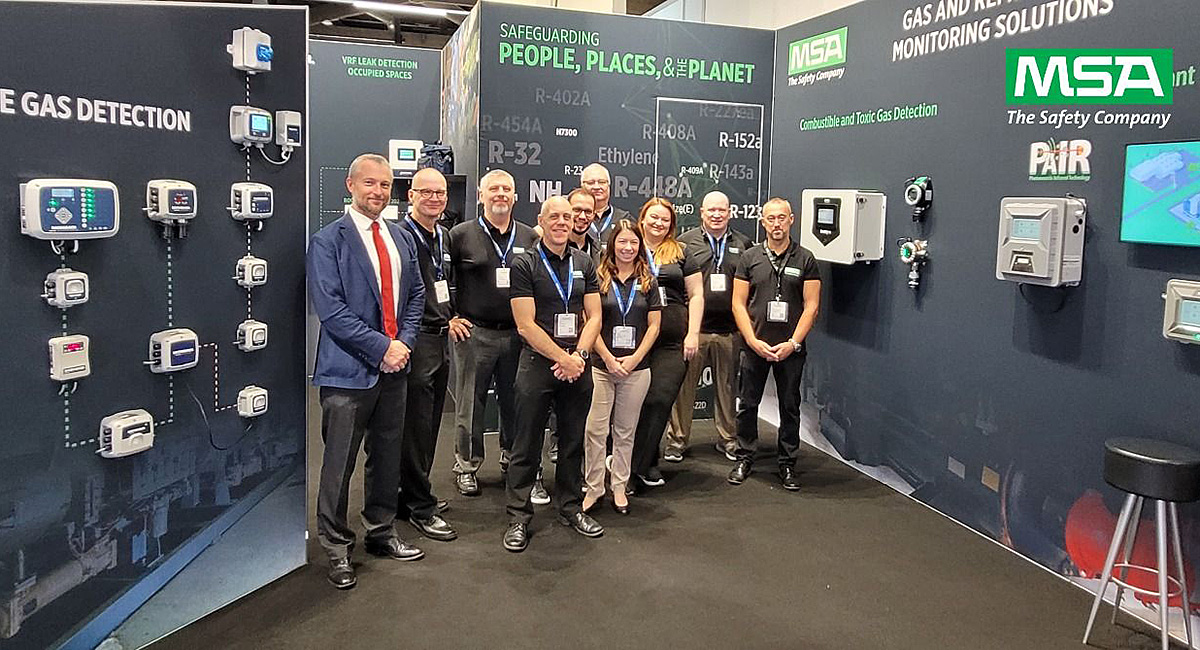
If you look back over the past year and a half—that is, ever since the court decision on HFC bans—you’ve probably noticed a lot of news around HFC refrigerant regulations and the HFC refrigerant phase out.
From the SNAP Rule 20 lawsuit initiated in 2017 to the revisions to EPA Section 608 proposed in 2018, HFC refrigerant regulations in the US, once rather straightforward, have become much more complicated and confusing. And, in turn, so has the HFC refrigerant phase out.
That’s why, in this post, we’re going to help bring some clarity to you on HFC refrigerant regulations in the US and what it all means.
To start, we’ll cover the 1) EPA SNAP Rule 20 lawsuit and 2) HFC controls in the EPA 608 Update. Then, we will conclude with an update on the 3) current US relationship to the Kigali Amendment and 4) various states’ HFC initiatives.
Let’s get started.
What are HFC Refrigerants?
Before we delve into the full details of the HFC refrigerant regulations, let’s briefly review what HFC refrigerants are. First and foremost, hydrofluorocarbon (HFC) refrigerants are the third generation of fluorinated refrigerants.
That is, first came chlorofluorocarbon (CFC) refrigerants; however, in the late 1970s, it was discovered that CFCs could be damaging to the stratospheric ozone layer. Thus, soon after, in 1987, nations around the world signed the Montreal Protocol to Reduce Substances that Deplete the Ozone Layer to phase out CFCs.
This then promulgated the second- and third-generation of refrigerants into the spotlight: hydrochlorofluorocarbons (HCFCs) and hydrofluorocarbons (HFCs).
HCFCs are considered the second-generation of refrigerants and the first-generation of substitutes to CFCs. Like CFCs, they have ozone-depleting potential (ODP), but to a lesser degree, as well as global warming potential (GWP).
Now, HFCs are considered the third-generation of refrigerants and the second-generation of substitutes. Unlike CFCs and HCFCs, they do not have any ODP. As a result, they became increasingly used as replacements for these ozone-depleting refrigerants. Their increase in popularity came at a cost, too, however, as HFCs still have high GWP.
Thus, because of significant concerns about their environmental impact, the EPA decided to regulate HFCs as well. And, it started with EPA’s Significant New Alternatives Policy (SNAP) Program and then later with Section 608. In fact, HFC refrigerants were regulated through these two regulatory angles. It was fine for a while, but, then, it became messy and complicated, particularly in 2017 with the SNAP Rule 20 lawsuit, which leads us to our next point:
HFC Refrigerant Regulations Came to a Crossroads in 2017
Indeed, on August 8, 2017, Mexichem Fluor, Inc., v. EPA, the HFC court decision, changed the direction of HFC refrigerant regulations in the US. Up until that point, it seemed that the HVAC-R industry was headed towards a rather uniform approach to HFC controls.
Consider just how the stage was set.
It went as such: The final rule for EPA SNAP Rule 20 was published on July 20, 2015. Then, on November 18, 2016, the Update to the Refrigerant Management Requirements Under the Clean Air Act, commonly referred to as the EPA 608 Update, was finalized. Next, the final rule for EPA SNAP Rule 21 was published on December 1, 2016.
Both EPA SNAP Rule 20 and 21 banned the use of certain high-GWP HFCs, like R-404A, in various refrigeration and air conditioning end-uses. Meanwhile, the EPA 608 Update expanded its maintenance and leak repair requirements beyond ozone-depleting substances to include substitute refrigerants (e.g., HFCs, HFOs, and PFCs).
The point here is, the HFC refrigerant regulations were coming from not one but two different angles by the EPA: Section 608 of the Clean Air Act and the SNAP Program.
But, this trajectory for the HFC refrigerant regulations came to a crossroads with the EPA SNAP Rule 20 lawsuit.
Farewell to the HFC bans in EPA SNAP Rule 20 (at the Federal Level)
And it’s little wonder why. You see, SNAP Rule 20 represented a shift in the EPA’s approach with the SNAP program. With this Rule, the EPA began to ban HFC refrigerants, such as R-404A, R-410A, and R-507A, and make them unacceptable as of certain dates.
Some agreed with this shift, and others did not.
The problem was that HFCs are not ozone-depleting substances. And, this is where the controversy originated and what initiated a lawsuit by Mexichem and Arkema.
Yes, in Mexichem Fluor, Inc., v. EPA, the Cooling Post explains, “The Court decided 2-1 that the EPA could not use a section of the Clean Air Act to target HFCs.”
And, you can look to the opinion of the D.C. Circuit Court of Appeals for further information on this. For instance, the Court states, “Section 612 does not require (or give EPA authority to require) manufacturers to replace non-ozone depleting substances such as HFCs. We therefore vacate the 2015 Rule to the extent it requires manufacturers to replace HFCs.”
Thus, Mexichem Fluor, Inc., v. EPA vacated the HFC bans in EPA SNAP Rule 20 and halted the EPA HFC refrigerant phase out.
Now, this court decision on HFC bans did not go down without significant backlash, particularly from the intervenors in the case Chemours, Honeywell, and the NRDC. In fact, it wasn’t until October of 2018 that the US Supreme Court “declined to consider a review of the DC Circuit Court of Appeals decision to block EPA bans on HFCs,” the Cooling Post reports.
It’s sufficient to say that, for now, it’s a farewell to the HFC bans in EPA SNAP Rule 20 at the federal level.
EPA Proposes Revisions to EPA 608
And just when you thought that the SNAP Rule 20 lawsuit brought enough confusion for HFC refrigerant regulations… On September 18, 2018, the EPA issued a proposed rule to revise the Section 608 regulations, particularly its extension to HFC refrigerants.
This happened amidst the SNAP Rule 20 lawsuit, as Chemours, Honeywell, and the NRDC appealed the D.C. Court decision to the Supreme Court and as California passed its own HFC regulation.
The 2018 proposed rule (83 FR 49332) to revise Section 608 was published in the Federal Register on October 1, 2018, and you can find it here.
In it, you will find that the EPA proposed “to withdraw the recent extension of the appliance maintenance and leak provisions at 40 CFR 82.157 to appliances using only nonexempt substitute refrigerants” and even “took comment on whether to withdraw the extension of the full set of subpart F provisions to non-exempt substitute refrigerant.”
As you might guess, this proposed rule only added to the HVAC-R industry’s confusion about HFC refrigerant regulations. This is evident in the amount of comments received on the published rule: There were nearly 300 comments submitted.
Since the publishing of this proposed rule to revise EPA 608, no major development has occurred, and we are awaiting a final rule to be published. Undoubtedly, this proposal has put the future of HFC refrigerant regulations further into question.
HFC Refrigerant Regulations Are Now More Complicated and Unsettled
In fact, if you take the EPA SNAP Rule 20 lawsuit and the proposal to revise Section 608 into account, it’s fair to say that HFC refrigerant regulations are now more complicated and unsettled than ever before.
Now, there are two unpredictable factors that could significantly change this current landscape: 1) the US relation to the Kigali Amendment and 2) states’ various HFC initiatives.
It’s important to note that the Kigali Amendment went into effect January 1 without US adoption, and, recently, there’s been little indication whether the US will join in on this global HFC phasedown. If and when there is update on this, we’ll let you know here on the Bacharach blog.
Further, various states, frustrated with what has happened to the HFC refrigerant phase out at the federal level, have decided to implement their own HFC initiatives. So far, these states have signaled their support to phase out HFCs: California, Connecticut, Maryland, New Jersey, New York, Washington State, and Vermont. (Note: This list is accurate as of the date that this article was originally published.)
Even more, with states a part of the U.S. Climate Alliance but not listed above, there’s a large possibility of HFC refrigerant regulations developing.
What will happen to HFC refrigerant regulations and with the HFC refrigerant phase out as a whole in the weeks and months ahead is unclear. But this is what you should know about it for now.







